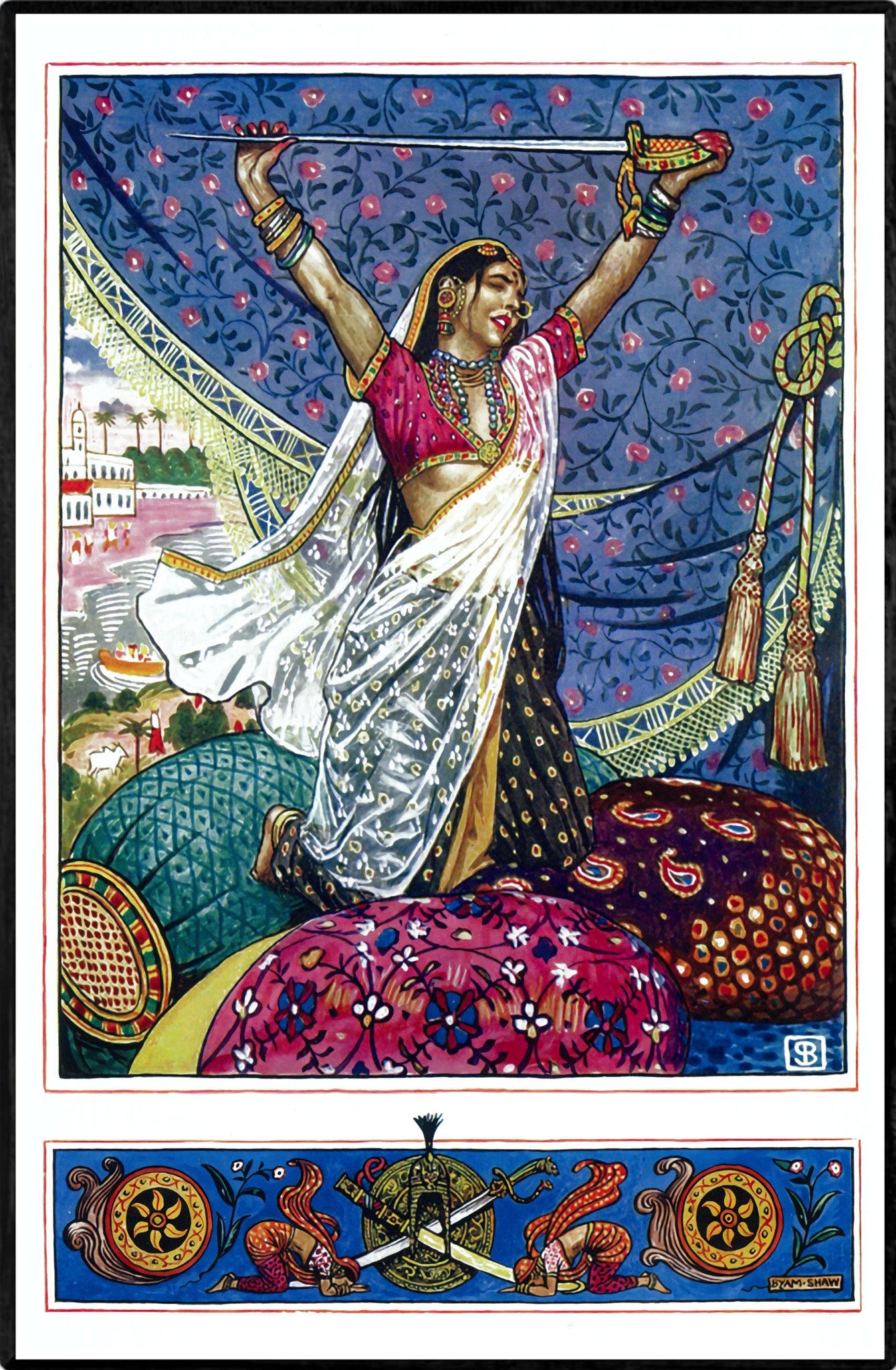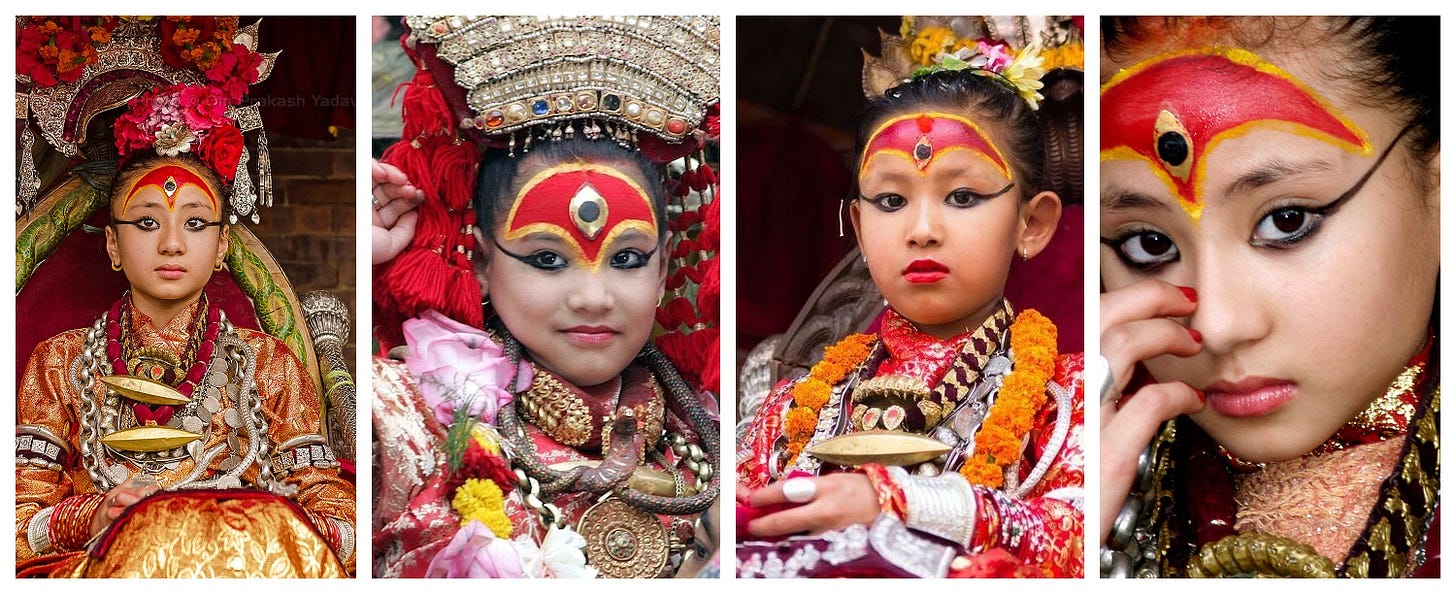The Living Goddess of Nepal: A Journey through Tradition, Trials, and Divine Destiny
Words by Shereen Shaji
Welcome to the Brown History Newsletter. If you’re enjoying this labour of love, please do consider becoming a paid subscriber. Your contribution would help pay the writers and illustrators and support this weekly publication. If you like to submit a writing piece, please send me a pitch by email at brownhistory1947@gmail.com.
Don’t forget to check out our SHOP and our Podcast.

The Living Goddess of Nepal: A Journey through Tradition, Trials, and Divine Destiny
We strolled along the captivating streets of Kathmandu, savouring its beauty at a leisurely pace. Each lane was lined with grand forts and temples, where meticulous artistry was etched into every pillar. Throughout the day, we remained utterly bewitched by the architectural splendour and magnificence of the temples and monuments proudly displayed by Kathmandu. As we were coming to an end of the days’ sightseeing and heritage exploration, our tour guide closely gathered us all together and announced, “For our final event of the day, let’s go see God!”
At first, I thought he was probably joking and meant a temple maybe; but I was so wrong. He was taking us to meet the living goddess of Nepal, the Royal Kumari. Located within the Basantapur Durbar Square, which is a World UNESCO Heritage Site, we arrived at a courtyard that led us to the residence of the Kumari. Locally known as the ‘Kumari Ghar’, the quadrangular abode enclosed a quaint garden at its center. The architecture and design of the building was punctiliously carved and precise. Painted in hues of brick red and dark brown, the building featured arched windows that had the depictions of gods and goddesses carefully chiseled onto them. As we admired the beauty of the elegantly designed living quarters, a priest, who also served as her caretaker, emerged from a first floor window and asked us to gather below the verandah for “darshan”. In Indian religions, “Darshana”, also spelt “Darshan”, or “Darshanam” is the auspicious sight of a deity or a holy person. He also instructed us not to photograph the Kumari or speak aloud once she arrived to bestow her blessings upon us.
Filled with excitement and curiosity, we huddled together eagerly to catch a glimpse of the living Goddess of Nepal. A mere 9-year-old, she donned an ensemble of red and gold, her hair fashioned into a sleek upside-down bun. Adorning her forehead was the “agni chakshu”, or the "fire eye”, a mark symbolizing her extraordinary powers of perception. Poised above us, the Kumari cast a swift gaze upon her devotees standing below and then continued to gently close her eyes, her hands folding into a prayer. Time seemed to stretch as we waited and after what seemed like five full minutes, she motioned her hands gesturing a blessing and proceeded to leave the rooftop.






